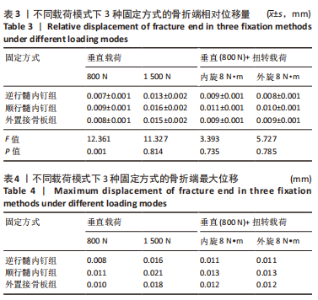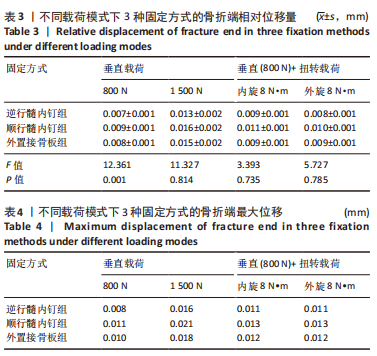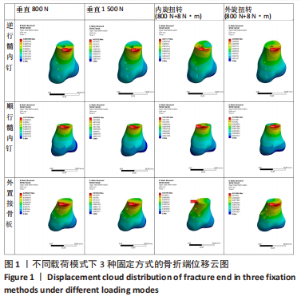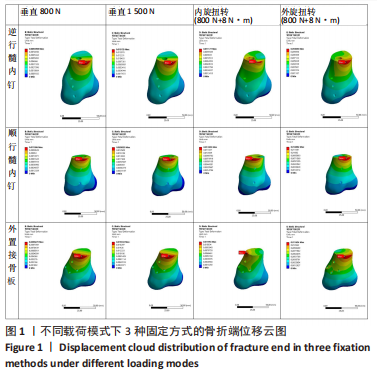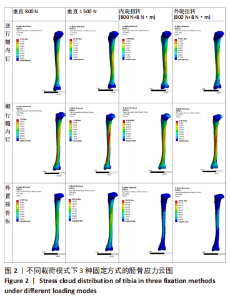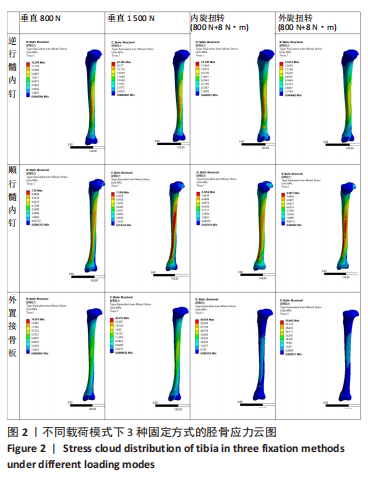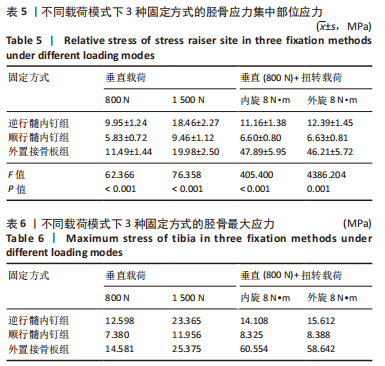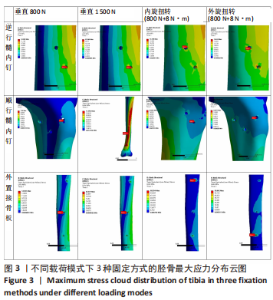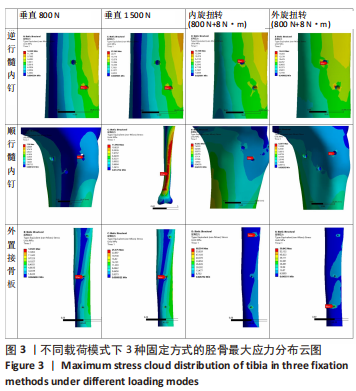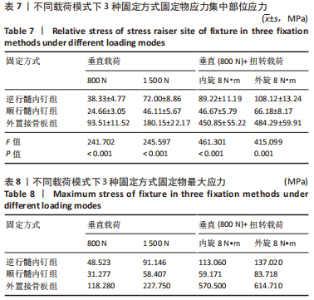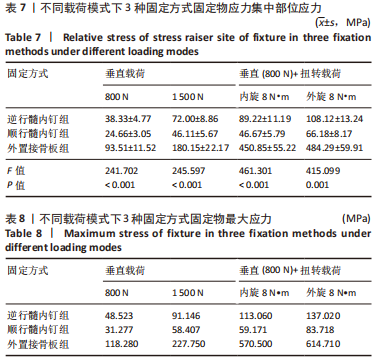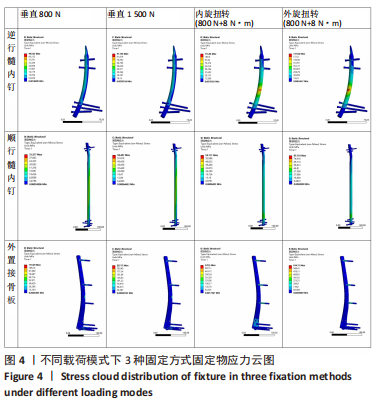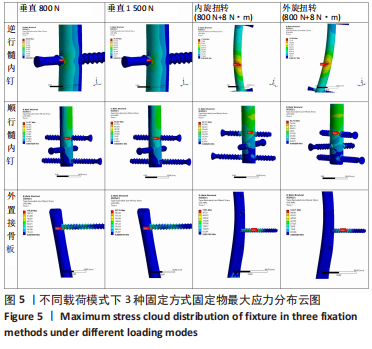[1] DAOLAGUPU AK, MUDGAL A, AGARWALA V, et al. A comparative study of intramedullary interlocking nailing and minimally invasive plate osteosynthesis in extra articular distal tibial fractures. Indian J Orthop. 2017;51(3):292-298.
[2] WANG M, DENG Y, XIE P, et al. Optimal Design and Biomechanical Analysis of a Biomimetic Lightweight Design Plate for Distal Tibial Fractures: A Finite Element Analysis. Front Bioeng Biotechnol. 2022; 21(10):820921.
[3] 贾军锋,唐承杰,乐劲涛,等.胫骨远端骨折3种不同固定方式的有限元分析[J].中国组织工程研究,2019,23(32):5188-5194.
[4] LIU W, YANG L, KONG X, et al. Stiffness of the locking compression plate as an external fixator for treating distal tibial fractures: a biomechanics study. BMC Musculoskelet Disord. 2017;18:1-6.
[5] QIU XS, YUAN H, ZHENG X, et al. Locking plate as a definitive external fixator for treating tibial fractures with compromised soft tissue envelop. Arch Orthop Trauma Surg. 2014;134:383-388.
[6] HIDAYAT L, TRIANGGA AFR, CEIN CR, et al. Low profile external fixation using locking compression plate as treatment option for management of soft tissue problem in open tibia fracture grade IIIA: A case series. Int J Surg Case Rep. 2022;93:106882.
[7] KUHN S, APPELMANN P, PAIRON P, et al. The retrograde tibial nail: presentation and biomechanical evaluation of a new concept in the treatment of distal tibia fractures. Injury. 2014;45Suppl 1:S81-S86.
[8] 何敏,李正茂,谭文甫,等.新型逆行胫骨髓内钉治疗胫骨远端骨折的初步疗效分析[J].中华创伤骨科杂志,2022,24(4):334-338.
[9] ZDERIC I, GUEORGUIEV B, BLAUTH M, et al. Angular stable locking in a novel intramedullary nail improves construct stability in a distal tibia fracture model. Injury. 2022;53(3):878-884.
[10] LUO P, XU D, WU J, et al. Locked plating as an external fixator in treating tibial fractures: A PRISMA-compliant systematic review. Medicine (Baltimore). 2017;96(49):e9083.
[11] ZHANG J, EBRAHEIM N, LI M, et al. External fixation using locking plate in distal tibial fracture: a finite element analysis. Eur J Orthop Surg Traumatol. 2015;25:1099-1104.
[12] BLAŽEVIĆ D, KODVANJ J, ADAMOVIĆ P, et al. Comparison between external locking plate fixation and conventional external fixation for extraarticular proximal tibial fractures: a finite element analysis. J Orthop Surg Res. 2022;17(1):16.
[13] CAO Y, ZHANG Y, HUANG L, et al. The impact of plate length, fibula integrity and plate placement on tibial shaft fixation stability: a finite element study. J Orthop Surg Res. 2019;14(1):52.
[14] BENULIČ Č, CANTON G, RASIO N, et al. Mechanobiology of indirect bone fracture healing under conditions of relative stability: a narrative review for the practicing clinician. Acta Biomed. 2022;92(S3): e2021582.
[15] WANG Z, CHENG Y, XIN D, et al. Expert tibial nails for treating distal tibial fractures with soft tissue damage: a patient series. J Foot Ankle Surg. 2017;56(6):1232-1235.
[16] KARIYA A, JAIN P, PATOND K, et al. Outcome and complications of distal tibia fractures treated with intramedullary nails versus minimally invasive plate osteosynthesis and the role of fibula fixation. Eur J Orthop Surg Traumatol. 2020;30(8):1487-1498.
[17] LOWENBERG DW, DEBAUN MR, BEHN A, et al. Interlocking screw configuration influences distal tibial fracture stability in torsional loading after intramedullary nailing. Eur J Orthop Surg Traumatol. 2020; 30:1205-1213.
[18] CHAN DS, NAYAK AN, BLAISDELL G, et al. Effect of distal interlocking screw number and position after intramedullary nailing of distal tibial fractures: a biomechanical study simulating immediate weight-bearing. J Orthop Trauma. 2015;29(2):98-104.
[19] BEEBE MJ, MORWOOD M, SERRANO R, et al. Extreme Nailing: Is It Safe to Allow Immediate Weightbearing After Intramedullary Nail Fixation of Extra-articular Distal Tibial Fractures (OTA/AO 43-A)? J Orthop Trauma. 2019;33(8):392-396.
[20] HADEED MM, PRAKASH H, YARBORO SR, et al. Intramedullary nailing of extra-articular distal tibial fractures. Bone Joint J. 2021;103-B(2):294-298.
[21] KUHN S, APPELMANN P, PAIRON P, et al. A new angle stable nailing concept for the treatment of distal tibia fractures. Int Orthop. 2014; 38(6):1255-1260.
[22] GREENFIELD J, APPELMANN P, WUNDERLICH F, et al. Retrograde tibial nailing of far distal tibia fractures: a biomechanical evaluation of double- versus triple-distal interlocking. Eur J Trauma Emerg Surg. 2022;48(5):3693-3700.
[23] WU K, LI B, GUO JJ. Fatigue Crack Growth and Fracture of Internal Fixation Materials in In Vivo Environments-A Review. Materials (Basel). 2021;14(1):176.
[24] SHI D, LIU K, ZHANG H, et al. Investigating the biomechanical function of the plate-type external fixator in the treatment of tibial fractures: a biomechanical study. BMC Musculoskelet Disord. 2020;21(1):128.
[25] JEPSEN KJ, DAVY DT, KRZYPOW DJ. The role of the lamellar interface during torsional yielding of human cortical bone. J Biomech. 1999; 32(3):303-310.
[26] PERREN SM, FERNANDEZ A, REGAZZONI P. Understanding Fracture Healing Biomechanics Based on the “Strain” Concept and its Clinical Applications. Acta Chir Orthop Traumatol Cech. 2015;82(4):253-260.
[27] MEHBOOB A, MEHBOOB H, KIM J, et al. Influence of initial biomechanical environment provided by fibrous composite intramedullary nails on bone fracture healing. Compos Struct. 2017; 175:123-134.
[28] 杨卫强,赵永明,丁童,等.动态锁定螺钉固定胫骨远端骨折的有限元分析[J].中国矫形外科杂志,2021,29(9):835-838.
|
